By Pat McTaggart
It was less than a month since the great blood letting in the Orel salient in July 1943 had taken place, and just some months to go before the infamous Second Battle of Kiev. At the time, both the German and Soviet armies that took part in the battle had already suffered horrendous casualties. The losses of tanks and mechanized vehicles were also enormous as the German attack was met by a Soviet counterattack that left soldiers on both sides reeling like punch happy boxers.
Red Army units slowly pushed the Germans back to their start lines with both sides taking even more casualties. Ground troops were exhausted, and vehicles were worn out from constant use, yet the Red Army was preparing to launch its first summer offensive of the war.
In far off Berlin there were those at the Oberkommando der Wehrmacht (OKW—the German Armed Forces High Command) who scoffed at the idea that the Russians could mount a major offensive after the bloody nose they had received in the July battle. The frontline generals, however, were under no such illusions. The commander of Army Group South, Field Marshal Erich von Manstein, wrote, “On 2nd August we informed OKH [Oberkommando des Heeres—the German Army High Command] that we were expecting an immediate offensive against the Army Group’s northern front west of Belgorod. This, we thought, would probably be supplemented by an attack southeast of Kharkov with the aim of taking our forces round the town in a pincer movement and opening the enemy’s way to the Dnepr [River].”
Von Manstein was right on the money. On August 3 all hell broke loose as an intense artillery barrage hit General Eugen Ott’s LII Army Corps for five minutes. After a 30-minute lull, a two-hour barrage pounded the same sector, augmented by heavy air attacks. As the artillery ceased, infantry and tanks of the 5th and 6th Guards Armies hit the junction of Ott’s corps and the XLVIII Panzer Corps, splitting the front asunder and driving a wedge between the two corps. The Soviet 5th Guards Tank Army exploited the breakthrough, and by the end of the day the Russians had penetrated up to 24 kilometers behind the German lines.
The offensive, code-named Rumyantsev after one of the foremost Russian generals of the 18th century, was only the first of several operations to pummel the Germans. During the following days, the Soviet 53rd Army was able to cut the vital Belgorod-Kharkov road, creating major supply problems for the enemy. On August 12, lead elements of the Steppe Front entered the outskirts of Kharkov, finally taking the city on August 23 after severe fighting.
Meanwhile, General Karl Hollidt’s 6th Army’s position on the Mius River was assaulted by Col. Gen. Fedor Ivanovich Tolbukhin’s South Front. Within a few days, Hollidt had been pushed back from his river defenses, and the Soviets retook the city of Taganrog on the Sea of Azov at the end of the month. The August offensive had cost Army Group South about 133,000 casualties, of which only 33,000 were replaced. On September 3, von Manstein flew to Hitler’s headquarters at Rastenburg in East Prussia to ask for either more replacements or permission to shorten his lines if replacements could not be provided. He later wrote that the meeting “proved quite profitless.”
The Russian juggernaut continued to roll forward in the first half of September. Railway and communications lines between Army Group South and Army Group Center were broken when the Soviets severed the Briansk-Konotop rail line. On September 4, Hitler gave permission for General Erwin Jaenecke’s 17th Army to retreat from the Kuban to the Crimea. Further north, the Soviet 3rd Guards Army opened a 45-kilometer gap between the 1st Panzer Army and the 6th Army, which was closed on September 11 after five days of heavy fighting. On September 8, the city of Stalino fell, followed by the capture of Mariupal on the 10th. In essence, the Red Army was threatening to break open the entire German southern front.
September 15 found von Manstein in another long discussion about the deteriorating situation. Pullbacks on Army Group Center’s right flank had left General Hermann Hoth’s 4th Panzer Army in a perilous position. Von Manstein pressed the issue of withdrawal to the Dnepr before a catastrophe ensued.
“The fate of the whole Eastern Front is at stake here,” he told Hitler. Finally Hitler relented and gave permission for Army Group South to withdraw to a line running from Melitopol along the Dnepr to above Kiev, and then running along the Desna River. (Get the full story of the Eastern Front and the commanders who shaped its history inside WWII History magazine.)
Ending Three Years of Terror in Kiev
The Soviet High Command (STAVKA) was watching events closely. When intelligence reports indicated German preparations for a retreat, it was generally acknowledged that the next German defensive line would be on the Dnepr. Orders from Moscow were soon issued.
General Konstantin Konstantinovich Rokossovskii’s Central Front and General Nikolai Fedorovich Vatutin’s Voronezh Front were tasked with converging on Kiev and destroying the 4th Panzer Army. Col. Gen. Ivan Stepanovich Konev’s Steppe Front was ordered to advance on Kremenchug, and Col. Gen. Rodion Iakovlevich Malinovskii’s South West Front would keep exerting pressure on Hollidt’s 6th Army, which occupied Army Group South’s right flank, pushing him back toward Kherson with the objective of isolating the 17th Army in the Crimea.
Kiev had been in German hands for three years. The great battle of encirclement that took place in the area in August and September 1941 had cost the Soviets approximately 450,000 casualties. One of the oldest cities in Eastern Europe, Kiev is believed to have been founded in the 9th century. It had seen conquerors such as the Khazars, Varangians, Mongols, and Tatars come and go. On September 19, 1941, a new conqueror entered what was now the capital of the Soviet Ukraine as German troops marched through the city.
The soldiers were followed by the SS killing squads of the Einsatzgruppen, who rounded up the city’s Jews after parts of the city had been set alight September 25 by troops of the Soviet secret police, the NKVD, still hidden in the area. The fire gave the Germans a pretext for what became a name synonymous with the Holocaust.
On September 29-30, approximately 34,000 Jews were marched to a ravine outside the city known as Babi Yar. There they were met by the men of SS Colonel Paul Blobel’s Sonderkommando 4a, which was part of SS Brig. Gen. Otto Rausch’s Einsatzgruppe C. Backed up by SD and SS police battalions and local police, the Jews were systematically marched into the ravine and shot. Only a few were able to escape. It was the beginning of a three-year reign of terror that Konev and Rokosovskii were ordered to end.
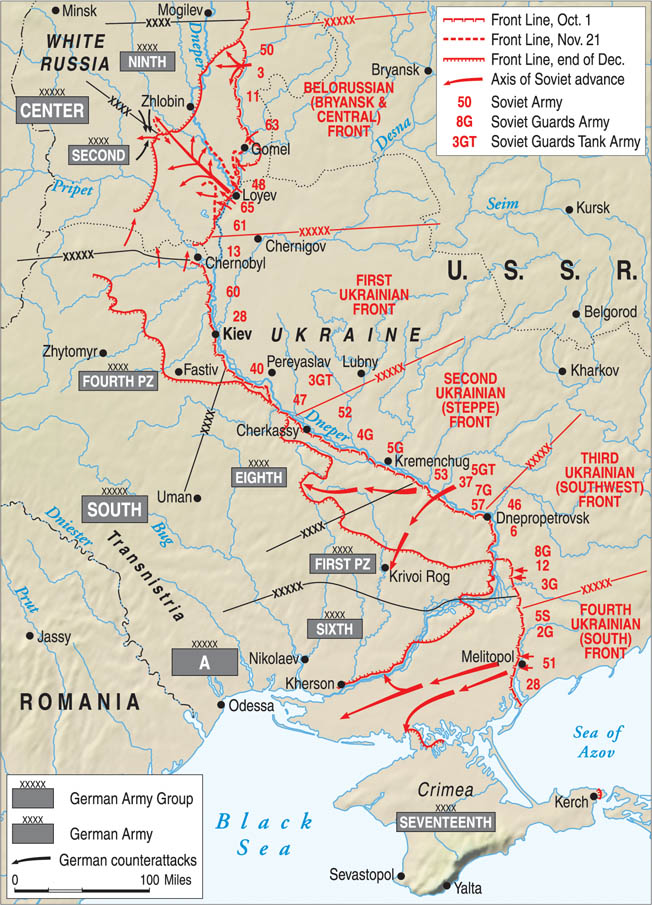
Pressure On the Dnepr Line
Their first problem, of course, would be to breach the Dnepr and Desna River defenses, which were rapidly filling up with retreating Germans. To do this they had to overcome fierce resistance from German rear guards. On September 16, Konev took Romny. Hollidt pulled his 6th Army back to the Melitopol Line the following day.
September 21 saw Lt. Gen. Pavel Semenovich Rybalko’s 3rd Guards Tank Army reach the eastern bank of the Dnepr opposite Kaniv. Vatutin immediately ordered a bridgehead to be established on the western bank by any means. The next day Rybalko’s men crossed the river north of Kaniv and secured a bridgehead in the Bukryn area. Rybalko was reinforced by Lt. Gen. Sergei Georgivich Trofimenko’s 27th Army and Lt. Gen. Kiril Semenovich Moskalenko’s 70th Army and quickly expanded the bridgehead while fighting off German counterattacks. Spending the next few days consolidating their gains, the Soviets planned their next move.
On September 26, two Soviet airborne brigades were dropped into the Bukryn bridgehead. Dropped at night, the 3rd Brigade landed on top of General Otto von Knobelsdorff’s XLVIII Panzer Corps. The ensuing slaughter decimated the Soviet paratroopers. The 5th Brigade also suffered severe casualties during its drop, rendering it virtually useless.
The 26th was not a total day of disaster for the Soviets. Lt. Gen. Nikander Evalmpievich Chibisov’s 38th Army forced a bridgehead about 20 kilometers north of Kiev at Lyutich. Soviet forces also established bridgeheads farther south in the Dnepropetrovsk area. The vaunted Dnepr Line was beginning to crack!
On September 27, the Russians received another bloody nose that showed them the Germans were still intent on holding their river defenses. Von Knobelsdorff launched a fierce counterattack on the Bukryn bridgehead, achieving several penetrations in the Russian line. The attack surprised Soviet commanders inside the bridgehead. With the German line stretched so thin a concentrated assault was considered extremely unlikely.
During the next few days the German assault continued. Several Soviet units simply ceased to exist, and many more were mere shadows of themselves. Von Knobelsdorff almost succeeded in clearing the entire bridgehead, but the stubbornness of the surviving defenders and Soviet artillery superiority helped the Red Army to maintain a fragile toehold.
Understrength German Defenders
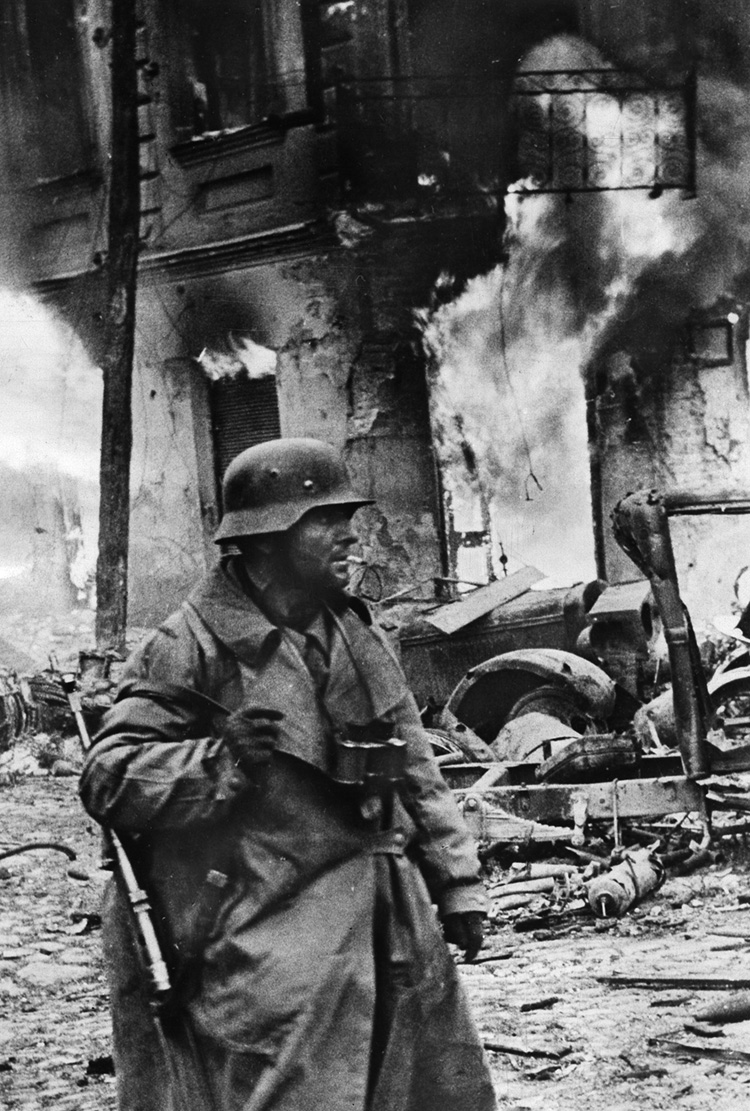
By September 30, Army Group South had succeeded in withdrawing behind the Dnepr. The west bank of the river was considerably higher than the eastern bank, which was a large flat area laced with swamps and streams. Looking from west to east, the Germans had an unhindered view of the treeless Steppe that stretched for several kilometers.
If Hitler had allowed defenses on the west bank to be built earlier in the year, the Germans would have had a strong, heavily fortified defensive barrier to meet the Soviets head on. As it was, many strongpoints were only half completed and were manned by depleted and exhausted units.
During the withdrawal to the Dnepr, Army Group South had taken severe casualties, including more than 200,000 wounded. Despite von Knobelsdorff’s strong attack, the average combat strength of von Manstein’s 37 infantry divisions numbered about 1,000 men, about 50 per kilometer of front. His armored and motorized divisions were also vastly understrength in both men and equipment.
The Russians had also suffered during the fighting withdrawal. Since August 26, Rokossovskii’s Central Front counted 35,000 killed or missing and 107,000 wounded, while Vatutin’s Voronezh Front listed 46,000 killed or missing and 131,000 wounded. Although fighting would continue unabated further south, both Soviet generals knew they needed breathing space to rest their men and receive equipment replacements and reinforcements before continuing the plan to take Kiev and destroy the 4th Panzer Army.
Although the Germans were stretched to the limit, they were still willing to launch more counterattacks against the Dnepr bridgeheads. Supported by General Kurt von der Chevallerie’s LIX Army Corps, which had been transferred from Army Group Center, Maj. Gen. Arthur Hauffe’s XIII Army Corps launched an attack against the Lyutich bridgehead on October 6. After making some progress, the attack failed in the face of Soviet armor that had been quickly ferried across the river to strengthen the bridgehead.
Establishing Bridgeheads Across the Dnepr
To the north, Rokossovskii’s Central Front was steadily pushing toward Gomel, but he was meeting increasing resistance from General Walter Weiss’s 2nd Army. Lt. Gen. Pavel Ivanovich Batov’s 65th Army was leading the advance. Since the opening of the offensive his divisions had been on the move, forcing the Desna River and heading northwest to the town of Unecha before turning southward toward Gomel. The city, located on the west bank of the Sozh River, was arguably the most important road and railway junction on the southern half of Field Marshal Ernst Busch’s Army Group Center’s front. If the right hook of the effort to take Kiev was to be in place, bridgeheads across the Sozh would have to be secured.
Gomel was about 200 kilometers north of Kiev. Rokossovskii hoped to capture the city, breaking the German communication lines between Army Group Center and Army Group South while establishing those bridgeheads from which he would spring when the time came to envelop Kiev.
The Germans had other ideas. Defending the Gomel area were the troops of General Johannes Friessner’s XXIII Army Corps and General Rudolf von Roman’s XX Army Corps. Both men were seasoned veterans of the Eastern Front, and they had methodically prepared their defenses. The area proved to be difficult to take, so Batov swung part of his army to the south, securing a couple of small bridgeheads across the Sozh.
On October 15, Batov’s men found a weak point in the German Dnepr defenses in the Loyev area, about 55 kilometers south of Gomel. Regrouping his forces, Batov crossed the river and established a substantial bridgehead. Pouring more reinforcements across the river, Batov was able to enlarge his gains, forcing the Germans to send reinforcements to keep the Soviets at bay. The new bridgehead enabled the Soviets to have another dagger pointed at separating Army Group Center and Army Group South when the time came to continue the advance on Kiev.
While waiting for the rest of his armies to reorganize for the continuing Dnepr assault, Vatutin ordered his forces inside the Bukryn bridgehead to launch a new assault on the German forces surrounding the perimeter. The same day Batov crossed the Dnepr at Loyev, the 27th and 40th Armies and 3rd Guards Tank Army stormed the German line. Although the Germans lacked defense in depth, their positions around the bridgehead were strong.
Using good interior lines and having corps artillery support, the divisions of the XLVIII Panzer Corps, temporarily commanded by Maj. Gen. Dietrich von Choltitz (the future commandant of Paris in August 1944) held their ground. Coming out of their start lines, the Soviets suffered terrific casualties as German artillery fired at preplotted target areas. The Russians regrouped again and again, but each time they came up against the same deadly wall of fire. They would try to break the Germans several more times during the next three days until the assaults were finally called off.
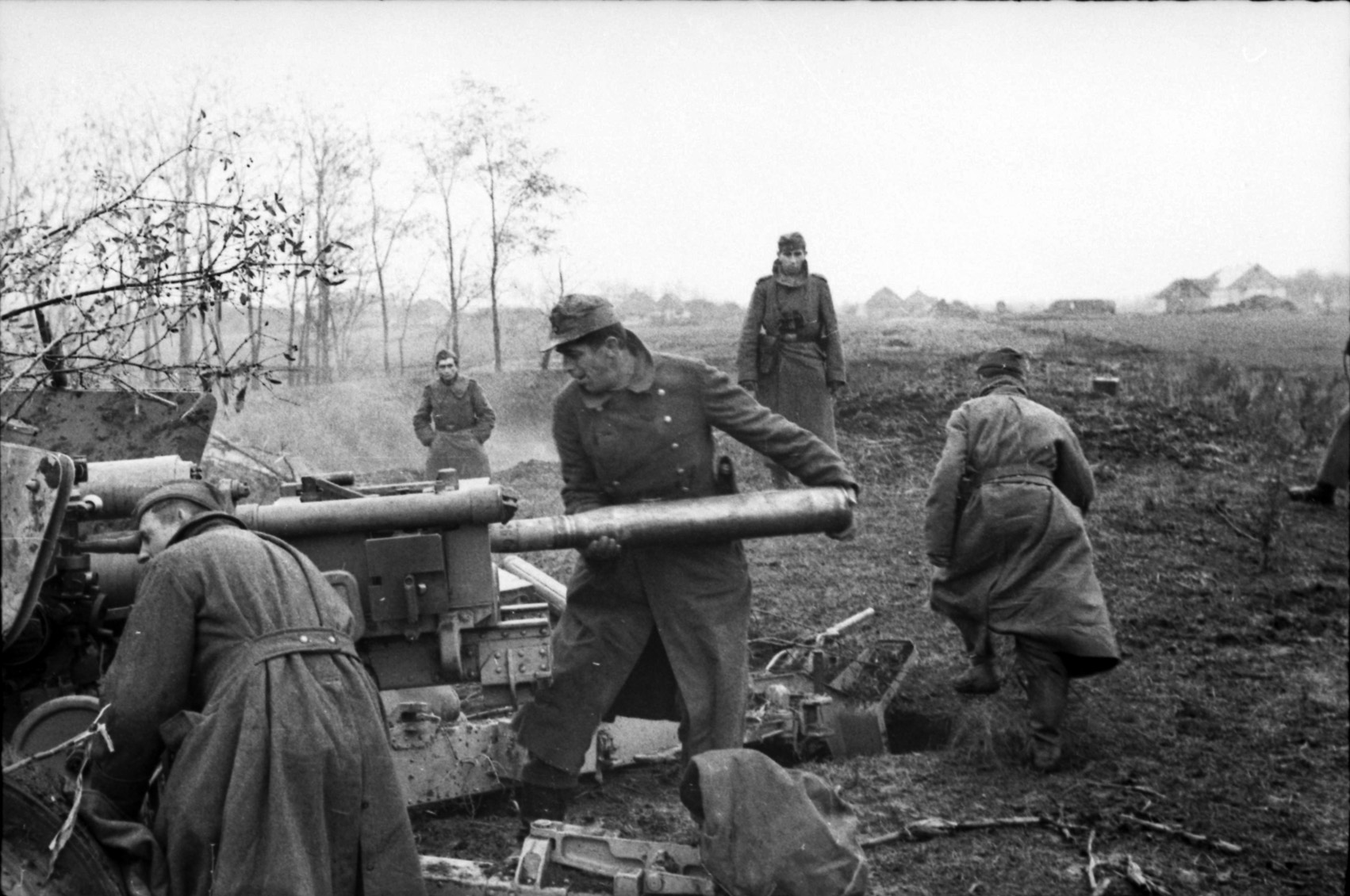
Finding a New Bridgehead
After it became obvious to STAVKA that the forces inside the Bukryn bridgehead were going nowhere, tacticians in Moscow came up with a new plan. The bridgehead at Lyutich, now firmly consolidated and bursting with men and equipment, seemed the most likely alternative for a breakthrough. The area around the bridgehead was held by General Ernst-Eberhard Hell’s VII Army Corps. For the most part, perimeter fighting in the area had been limited to armed patrols clashing with each other.
When the Soviets abandoned their attack out of Bukryn, Vatutin was ordered to again redeploy his forces. With intense secrecy, Rybalko’s 3rd Guards Tank Army slipped out of the bridgehead and began the trek to Lyutich, about 150 kilometers to the north, while other forces inside the bridgehead continued to patrol, fooling the Germans into thinking that all three armies were still in the area.
There was also a necessity for speed, which was going to be difficult in the swampy terrain that separated the two bridgeheads. Lt. Gen. Andrei Grigorovich Kravchenko’s 5th Guards Tank Corps was the first unit to make the move. His corps had to cross several small rivers and streams in the marshes to reach Lyutich. To accomplish this, Kravchenko ordered his troops to make their vehicles as waterproof as possible. They then sped full bore across the terrain—something that went against the standard rules of mechanized movement in that kind of environment. Although he lost several tanks along the way he managed to get most of his corps through. Other units of Rybalko’s army soon followed.
Mounting German Losses
On October 29, STAVKA redesignated its southern fronts. Vatutin’s Voronezh Front became the 1st Ukrainian Front, while Konev’s Steppe Front was renamed the 2nd Ukrainian Front. Their neighbors to the south, the South West Front and South Front, became the 3rd and 4th Ukrainian Fronts. To the north, Rokossovskii’s Central Front was renamed the Belorussian Front.
Parts of Army Group South continued to be hammered during the last days of October. On October 24, Lt. Gen. Pavel Aleksei Rotmistrov’s 5th Guards Tank Army took Krivoi Rog before it was pushed back by General Wend von Wietersheim’s 11th Panzer Division. The same day, General Maximilian de Angelis’s XLIV Army Corps was almost overrun on the 6th Army’s southern wing. In the 1st Panzer Army’s sector, Dnepropetrovsk fell to the 3rd Ukrainian Front the following day, leaving General Maximilian Fretter-Pico’s XXX Army Corps a shell of itself. During those attacks, the army group suffered losses that could not be replaced. On June 27, the 6th Army’s 73rd Infantry Division, commanded by Brig. Gen. Hermann Böhme, had just 170 combat effectives, while Maj. Gen. Hermann Recknagel’s 111th Infantry Division had 200. Equipment losses were also high. In the entire 6th Army there were only 25 operational tanks and assault guns.
The German forces in the south suffered another crippling blow when Hitler refused to allow General Erwin Jaenecke’s 17th Army to evacuate the Crimea. Soviet units of the 4th Ukrainian Front took the Perekop Peninsula, effectively bottling up the entire army and preventing it from taking any role in the furious battles to the north.
Planning Kiev’s Fall on a Symbolic Anniversary
Around Kiev, General Hermann Hoth’s 4th Panzer Army was waging a war of strike and counterstrike. As Soviet forces in the various bridgeheads in his sector made spoiling attacks, Hoth deftly moved his meager reserves from one crisis point to another. Only the bridgehead at Lyutich remained relatively quiet. Rybalko’s 3rd Guards Tank Army was still secretly filtering into the area, and STAVKA wanted to keep attention away from Lyutich until it was ready to attack. Most of Rybalko’s units were across the river by November 1.
After a little more fine tuning, Vatutin was ready to strike. He planned to use the 38th Army, now commanded by Moskalenko, as his spearhead using the 50th and 51st Rifle Corps. They would hit an area held by Colonel Paul Scheuerpflug’s 68th and Maj. Gen. Heinrich Roth’s 88th Infantry Divisions after an artillery bombardment. The 68th was only about 40 percent effective, and the 88th was not much stronger. After initial contact was made, the 23rd Rifle Corps would follow. Kravchenko’s 5th Guards Tank Corps would support the attack with 100 tanks. The orders were simple. Stalin wanted Kiev to be taken by November 7, the anniversary of the Bolshevik Revolution.
As dawn broke on November 3, more than 2,000 Red Army artillery guns opened fire on the VII and XIII Army Corps. German defenses collapsed in the explosive blasts as the shells tore them to pieces, and entire platoons disappeared. As the barrage moved forward, the 38th Army advanced, quickly overrunning the German positions as bombers and fighters from General Stephan Akimovich Kravsovskii’s 2nd Air Army raced overhead, hitting positions further to the rear and strafing anything that moved behind the lines. The Red Army troops tore a hole in the German line that could not be closed.
Holding Kiev at All Cost
About 18 kilometers north of Lyutich, Maj. Gen. Ivan Danilovich Cherniakhovskii had built up a bridgehead at Yasnohorodka. In conjunction with the Lyutich attack, Cherniakhovskii’s 60th Army burst out of the bridgehead. His divisions advanced west toward Zhytomyr, brushing aside German resistance in the area. In all there were 337,000 men supported by 500 tanks in the combined attacks. Facing them were fewer than 150,000 Germans that had about 50 operational tanks.
The German had been caught flat footed. Upon hearing first reports of the attack, Hoth ordered Maj. Gen. Georg Jauer’s 20th Panzergrenadier Division to counterattack. He also called on Brig. Gen. Hasso Freiherr von Manteuffel’s 7th Panzer Division and Colonel Werner Friebe’s 8th Panzer Division to join the attack on the Russians’ northwest flank, even though both divisions were vastly understrength.
Von Manteuffel hit the Russians south of Dymer only to run into concentrated antitank fire. The Germans suffered more losses from the Red Air Force as they tried to find a way through the Soviet flank. Friebe and Jauer’s divisions met a similar fate and were forced to go on the defensive. Reeling under the Soviet assault, the Germans gave way as the Russians advanced. Hauffe ordered Maj. Gen. Heinrich Roth’s 88th Infantry Division to retreat to Kiev. His mission was to hold the city at all costs.
Moskalenko Enters the City
By the end of November 4, the German front around Lyutich had collapsed and Rybalko’s mechanized forces were unleashed, pouring through the gaping holes torn open by the 38th Army. The German withdrawal threatened to turn into a rout as Soviet tanks roamed the battlefield, slaughtering more of the enemy as they advanced.
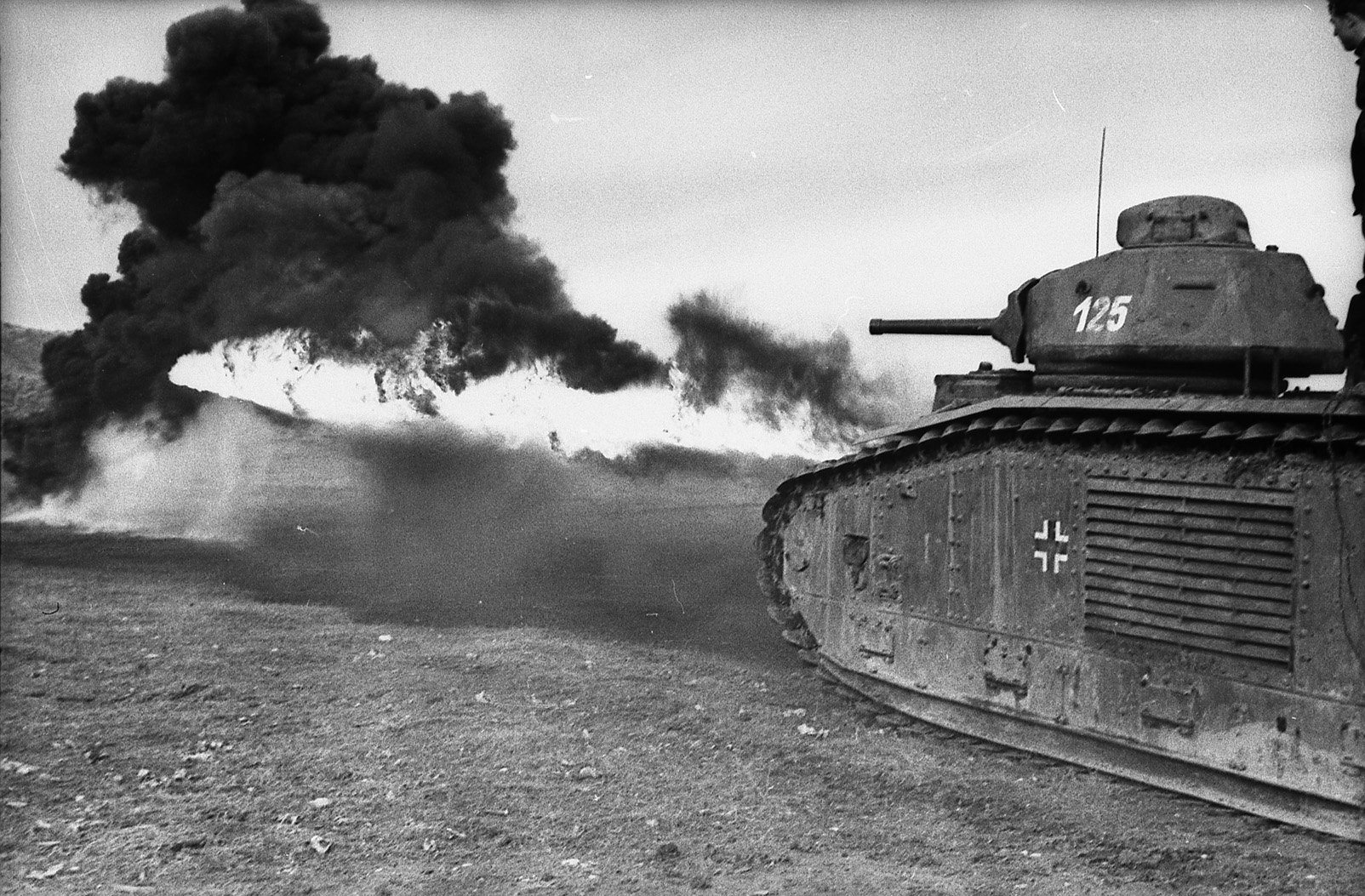
On November 5, Moskalenko’s men entered Kiev. They were met with fierce resistance as Roth’s men, occupying strongpoints throughout the city, defended every block. In street battles reminiscent of Stalingrad, the Soviets destroyed position after position. The fighting raged into the night, with Roth becoming one of the German casualties.
The Soviets captured the main rail station by the end of the day, and Moskalenko announced that most of the area was back in Russian hands and that the enemy was fleeing. In fact, most of the 88th had been destroyed in the battle. On November 6, the Soviet general sent a report stating the entire city had been liberated and that 6,000 prisoners had been taken.
Reinforced With Panzers From France
Meanwhile, Rybalko was moving toward the city of Fastiv (Fastov), about 60 kilometers southwest of Kiev. His original plan was to keep going all the way to Hitler’s former headquarters at Vinnytsa, which would have threatened the entire rear of Army Group South. Fastiv fell on November 7. Continuing on, Rybalko ran into lead elements of Maj. Gen. Adolf von Schell’s 25th Panzer Division.
Formed in Norway, the 25th had recently arrived from France. It was lacking in both training and equipment. One of its tank battalions still remained in the west, and some of its equipment included booty captured in 1940. Many of its experienced men had been taken from the division while it was still in France and shipped to various units in the east, and some of the men who replaced them had less than a month’s combat training.
The 25th had arrived piecemeal, and von Schell’s divisional elements were scattered in several unloading areas. The day Kiev fell, von Schell was ordered to advance toward Fastiv, unaware that Rybalko’s forces were fast approaching. He immediately formed a combat group consisting of two infantry battalions, two mixed artillery battalions, and 10 to 15 assault guns and began to advance toward the city. On the morning of the 7th, he was surprised by Rybalko’s spearheads. After losing a couple of armored personnel carriers, the Germans were forced to retreat in the face of superior numbers.
While this was taking place, two other panzer divisions were racing to the scene in an attempt to fill the wide gap created by the Russian assault. As von Schell’s combat group was taking on Rybalko’s spearhead, a combat group of Brig. Gen. Theodor “Teddi” Wisch’s 1st SS (Leibstandarte SS Adolf Hitler or LAH) Panzer Division was brought into an area northwest of Fastiv to form a blocking force in a large void in the German rear.
On November 10, an armored infantry battalion of Maj. Gen. Walter Kruger’s 1st Panzer Division arrived in Bila Tserkva with 60 armored personnel carriers. It was followed by the division’s armored reconnaissance battalion. They immediately began to construct blocking positions to slow down the advance Soviet units in the area, which was about 35 kilometers south of Fastiv and 80 kilometers southwest of Kiev. The move gave time for the XLVII Panzer Corps, now commanded by General Heinrich Eberbach, to assemble forces for a counterattack.
Two Soviet Brigades Destroyed
Vatutin’s forces continued to push westward. Cherniakhovskii’s 60th Army, aided by Lt. Gen. Nikolai Pavlovich Pukhov’s 13th Army, hit von der Chevallerie’s LIX Army Corps, which was now defending the approaches to Korosten. On paper, the corps listed four divisions, but three of those divisions (183rd, 217th and 339th) were about regimental strength and were designated Corps Detachment C. The detachment was commanded by Maj. Gen. August Dettling, commander of the 183rd. During the next few days of fighting, he was replaced by the commander of the 339th, Brig. Gen. Wolfgang Lange, on November 15.
Von der Chevallerie could do no more than fight a delaying action against the 60th Army. Hauffe’s XIII Corps, guarding the approaches to Zhytomyr, was also in the same predicament. Hoth’s three infantry corps were now split, with two in the north and Hell’s VII Corps in the south. They were all retreating, but VII Corps, located south of Zhytomyr, was rapidly being pushed southwest toward the left flank of the assembling XLVIII Panzer Corps.
The gap between the northern corps and Hell’s corps was significant. With virtually nothing to stop him, some historians have wondered why Vatutin did not head straight west. If he had, he could have driven all the way to Berdychiv instead of taking the time to take Korosten and Zhytomyr. Rybalko’s armored and mechanized forces could have easily reached the area, as there were few German units deployed there. With infantry reinforcements to protect his flanks, he could have split Army Group South in half, making it exceedingly difficult for the enemy to mount any kind of concentrated counterattacks.
Instead, the 3rd Guards Tank Army had been sent farther to the southwest. Rybalko, still hoping to reach Vinnytsa, sent a brigade from his 9th Mechanized Corps and another from his 7th Guards Tank Corps out as spearheads for the drive south. Overextending themselves, the two brigades ran into elements of the LAH, which were heading toward their assembly area. The Soviet brigades were surrounded near the villages of Popil’nya and Pavaloch, about 30 kilometers southwest of Fastiv, on November 11.
Three days later, they were destroyed. However, the 55th Tank Brigade, commanded by the future Col. Gen. David Dragunsky, managed to get most of his men out of the area on foot.
The 1st Guards Cavalry Corps took Zhytomyr. Farther north, von der Chevallerie’s corps was now nearly surrounded at Korotsten. Supplies had to be air dropped to the corps to keep it fighting, even as von der Chevallerie requested to pull back in order to maintain some semblance of a combat command. The request was denied, and Hitler ordered that the city be held at all costs.
Von Manstein decided that relieving the pressure on the LIX and XIII Corps was to be his first priority in trying to stop the Soviets. He noticed that the Russians had exposed their left flank around Zhytomyr and Korosten as a result of Rybalko’s southwest turn. On the 12th, he ordered an attack on the rear of the 38th Army, although some elements of the designated attacking force had not yet reached the front. The LAH and 1st Panzer would conduct the main assault, which was aimed at the Brusilov area, some 60 kilometers west of Kiev. With luck, he could then continue on to Zhytomyr and Korosten and then regain the ground lost on the west bank of the Dnepr, including Kiev. The two assault divisions were to be supported by the 7th Panzer and 68th Infantry Divisions on their left and the 25th Panzer and arriving 2nd SS “Das Reich” Panzer Division on the right.
While the attacking forces readied themselves, Vatutin took precautions of his own as his forces advanced westward. He also saw the same danger noticed by von Manstein, and he brought the 17th Rifle Corps down from the north and the 21st Rifle Corps forward from the Brusilov area to protect his vulnerable flank. Ordering both corps to plan for defensive action, he also strengthened them with additional antitank forces.
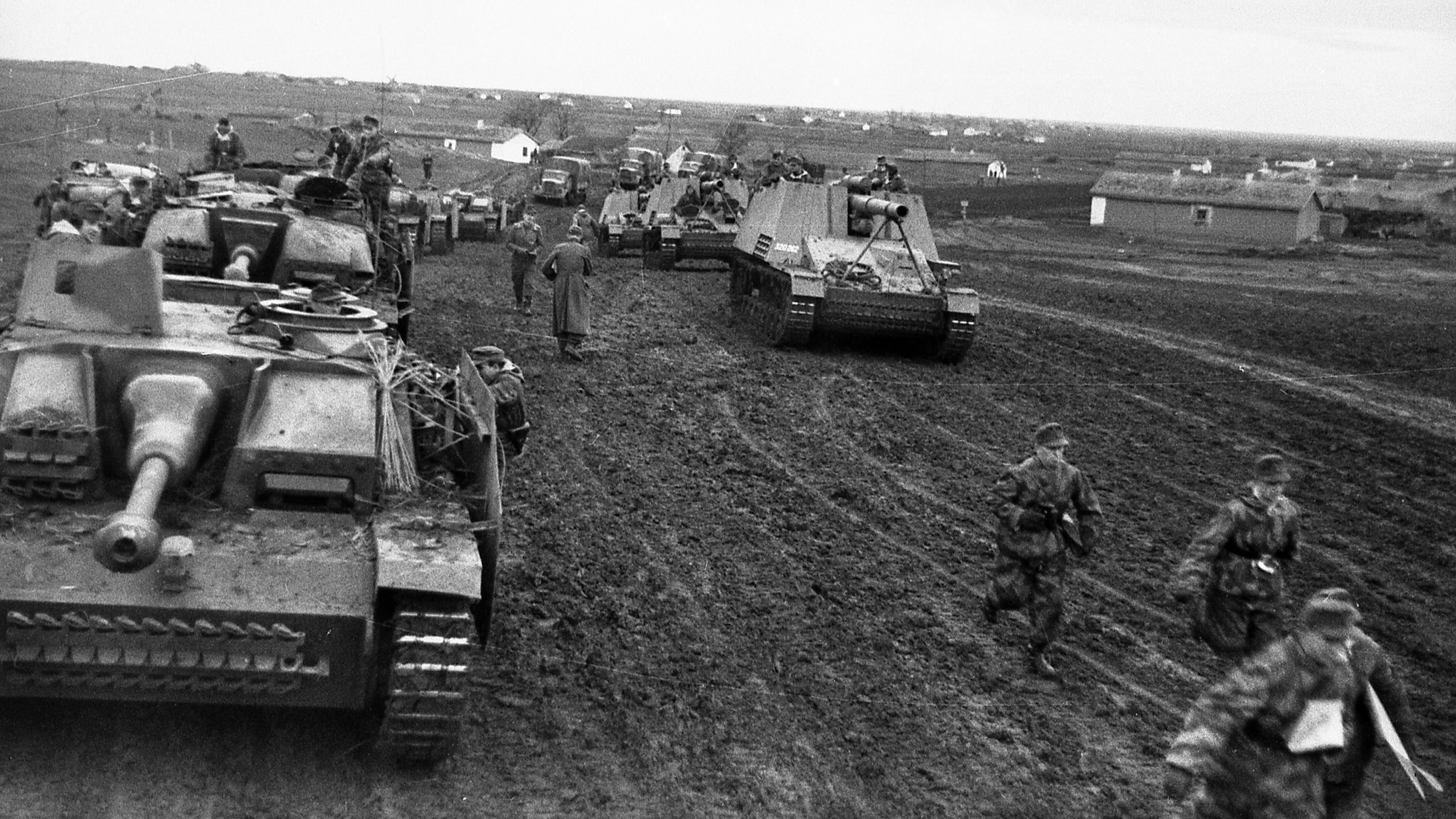
Eberbach sent his corps into action on the 13th. Von Manteuffel headed toward Zhytomyr, while the LAH and 1st Panzer drove toward Brusilov. With the LAH on his right, Krüger’s 1st Panzer made good initial advances. Crossing the small Unova River, the 1st took the village of Kryve on the 14th and then advanced with elements of the LAH to the town of Kornyn, about 24 kilometers south of Brusilov. There, the Germans met the arriving Russian corps that were being echeloned in depth to cover the Soviet flank.
Erhard Raus and and Hermann Balck
During the difficult fighting that followed the initial contact, the 1st Panzer and LAH were stalled for a time, as was the 7th Panzer farther north. While the Germans regrouped on the 14th, Hitler perceived the slowdown as due to inadequate command. On the 15th, he brought in Generals Erhard Raus and Hermann Balck.
Colonel Friederich-Wilhelm von Mellenthin, then chief of staff of the XLVIII Panzer Corps, later wrote, “General Balck, to my great joy, was given command of the Panzerkorps. With that, the Korps received one of the best Panzer commanders alive. Indeed, if Feldmarschall von Manstein is regarded as Germany’s greatest strategist of the Second World War, so too, I believe, must General Balck receive his due recognition as the best field commander of the Wehrmacht.”
He was not as kind to Raus. “As Chief-of-Staff of the Panzer Corps, von Mellenthin wanted to use all of the corps divisions grouped together in a strike from Fastiv toward Kiev instead of dividing those forces. Presenting his plan to the new army commander, he was told that it ‘was too ambitious.’”
Raus stuck to the original two-pronged approach, prompting von Mellenthin to write, “The history of armored warfare—and that of cavalry warfare before that—shows that the great prizes can only be won by speed, daring and maneuver. The ‘play safe’ school of generals was all very well on the Western Front in 1914-18, but is out of place in this age of the gasoline engine and the airplane.”
Wiesemann’s Posthumous Knight’s Cross
Nevertheless, the German attack rolled forward on the 15th with heavy rain falling. With the Panther medium tank elements of the 1st Panzer still en route, the LAH took the lead in the advance on Brusilov. At 1:05 pm, the commander of the 1st Panzer Grenadier Rgt./LAH, SS Lt. Col. Albert Frey, reported that his 1st Battalion had entered the village of Soloviika, about 10 kilometers south of Brusilov. Heavy Soviet tank and antitank fire resulted in several armored vehicles being destroyed, stopping the grenadiers dead in their tracks.
Frey ordered SS Captain Heinrich Heimann, commander of the LAH assault gun detachment, to send one of his companies to help take the village. His 2nd Company, commanded by SS Captain Emil Wiesemann, arrived on the scene and led an infantry-supported assault with his guns. At the head of his company, Wiesemann personally knocked out several Soviet T-34 medium tanks and antitank guns before being killed by a shell that hit his gun. The attack forced the Russians to abandon the village, leaving 18 burnedout T-34s on the field. At 1:45 pm, Frey reported that Soloviika was in German hands. Wiesemann was posthumously awarded the Knight’s Cross for his actions.
Fighting at Brusilov
To counter the German threat to Brusilov, Vatutin ordered Kravchenko’s 5th Guards Tank Corps to move into position to support infantry units dug in near the city. The rain made movement of both Soviet and German units difficult as roads turned into mud pits; however, the Soviets, with their wider tracks, were able to move their tanks faster while the Germans still struggled forward toward their goal. Other elements of Rybalko’s 3rd Guards Tank Army (6th and 7th Guards Tank Corps and 9th Mechanized Corps) were also being moved to try and block the German attack.
Meanwhile, von Manteuffel’s 7th Panzer, supported by Scheuerpflug’s 68th Infantry Division, reached the town of Levkiv, about 12 kilometers east of Zhytomyr, and cut the highway to Kiev on the 16th. The action severed communications and supplies between the 1st Guards Cavalry Corps and the rest of Vatutin’s front. Von Manteuffel then began to move northwest to attack the city from an unexpected direction.
In the Brusilov sector, the 1st Panzer Division was ordered to disengage and support the 7th Panzer, leaving the LAH to basically go it alone. At 3:15 am on the 16th, SS Major Gustav Knittel’s 1st SS Reconnaissance Battalion took Turbivka, about 14 kilometers south of Brusilov. Moving on the rain-soaked ground, Knittel launched an attack on Dyvyn, about four kilometers to the north. The attack ran into strong Soviet resistance, which forced Knittel to call of the thrust. After receiving reinforcements from the I/SS Panzergrenadier Regiment 2, Knittel renewed his attack and took the village at 6:40 pm.
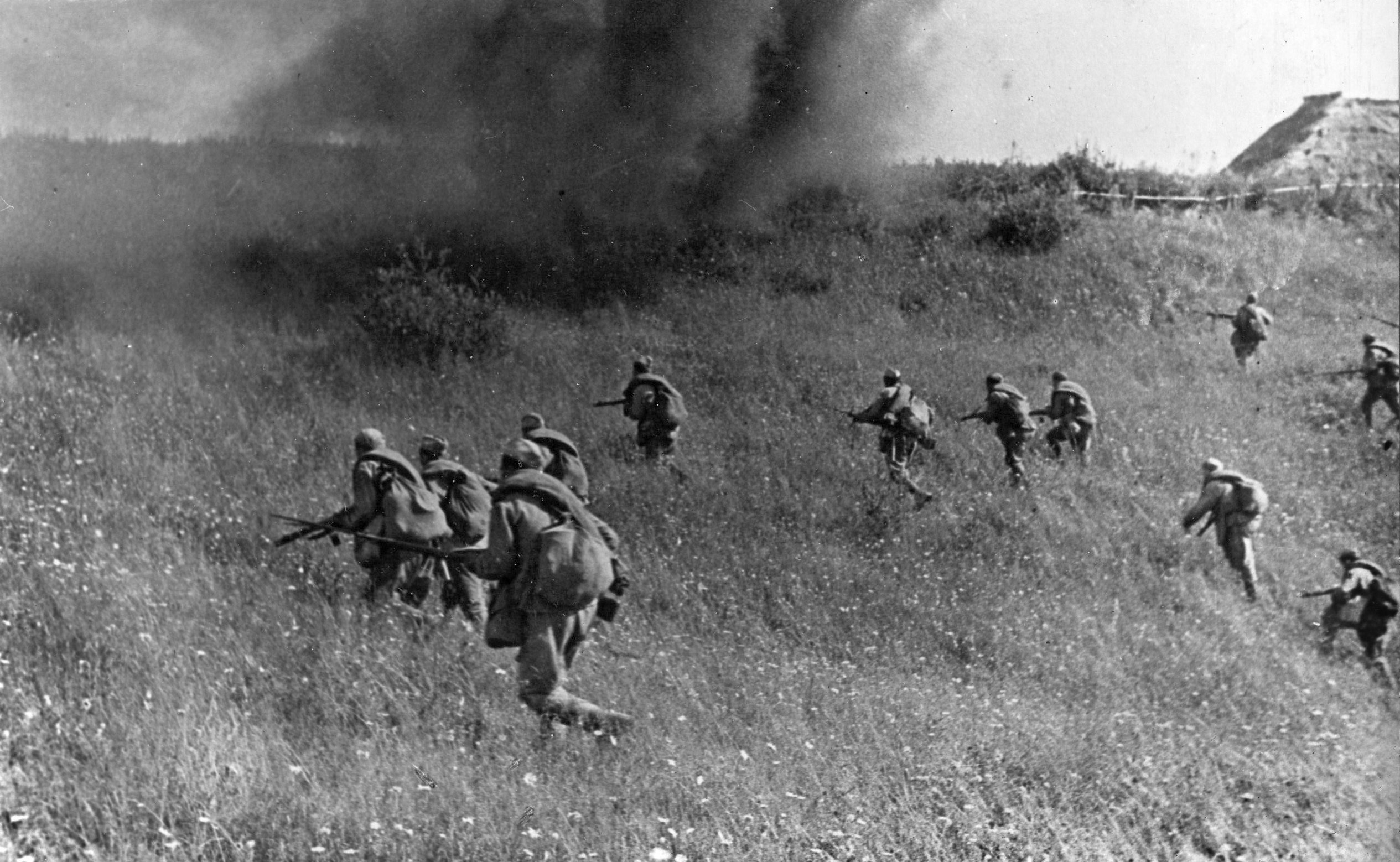
The attack toward Brusilov continued the following day, with Russian reinforcements streaming into the area. Wisch was forced to order the LAH to go over to a defensive posture as the Soviets unleashed counterattack after counterattack. The Russians broke through in several places, including the sector around the village of Kotscherovo, where Frey’s SS Panzergrenadier Regiment 1 found itself surrounded. The regiment assumed an all-around defense and repulsed a total of eight tank-supported attacks of regiment size or greater before night fell.
Schneiderheit’s Counterattack
During the fighting, SS Corporal Alfred Schneiderheit distinguished himself by holding a key position. An antitank rifle troop leader, Schneiderheit and his platoon held off several infantry attacks throughout the night. The next morning the Soviets attacked again, this time with tank support. Schneiderheit allowed the tanks to advance to within 60 meters of his position before opening fire and destroying one of them. Returning fire, the Russians forced Schneiderheit and his men back, with the corporal being wounded in the process.
Since his company commander had also been wounded, Schneiderheit took it upon himself to launch a counterattack with the remnants of his platoon. Grabbing a machine pistol, he led his men forward and regained the lost position, allowing his 8th Company to regain contact with its neighboring company. He and his men then repulsed two more tank-supported attacks. With every officer and sergeant either dead or wounded, he took command of the company and attacked the enemy flank.
During the attack he was hit by a shell fragment that almost severed his middle finger from his left hand. After a field dressing was applied, Schneiderheit continued to lead his men well into the night until he passed out from loss of blood. His actions halted the Soviet drive and earned him a recommendation for the Knights Cross, which he personally received from Hitler on January 16, 1944.
The Fall of Zhytomyr
While the LAH was stuck in front of Brusilov, the situation at Zhytomyr was much more promising. The addition of the 1st Panzer Division had given the Germans the punch they needed to take on the 1st Guards Cavalry Corps, which was supported by a rifle corps from the 60th Army. On the night of November 18, an attack by Lt. Col. Adalbert Schulz’s 25th Panzer Regiment (7th Panzer Division) broke into the city.
Armored infantry was quickly brought forward, and during the morning of the 19th a sharp battle took place beneath the oniondomed churches and centuries-old buildings that dotted the city. The Soviets were pushed out by mid-afternoon, leaving the city in German hands once more. Guarding the flank, other elements of the 1st Panzer reported destroying more than 20 Soviet tanks that were attempting to reinforce the city’s defenders.
The fall of Zhytomyr changed things for both sides. Like master chess players, Vatutin and Raus planned their next moves, hoping to catch their opponent making a mistake. In the Brusilov sector, the 25th Panzer moved up to support the LAH. Also arriving was Brig. Gen. Hans Källner’s well-seasoned 19th Panzer Division. With the new arrivals, Raus had Balck order the 1st Panzer, LAH, and 68th Infantry Division to keep pressure on the Soviets, pushing them eastward toward Brusilov. A combat group of the 2nd SS Panzer Division was also moved into the area and attached to the 7th Panzer Division.
While these moves were in progress, STAVKA ordered the 74th, 94th, and 107th Rifle Corps of the 1st Guards Army to move by rail toward Kiev and occupy a defensive line behind the 38th Army. The commander of the 1st Guards Army, Col. Gen. Vasilii Ivanovich Kuznets, was ordered to avoid contact with the Germans unless the situation absolutely warranted it. As German forces slogged through the mud, throwing themselves against the 38th Army’s defenses, Kuznets received permission to send the 94th Rifle Corps to bolster the line. For the time being, Soviet forces were on the defensive, letting the Germans batter away against their positions.
With the 1st and 7th Panzer Divisions pressing from the west, Balck ordered the Brusilov attack to continue. Early on November 20, the LAH moved through a sea of mud from Vodotyi toward Brusilov. Although some units succeeded in overrunning several Soviet forward positions, the attack halted at 5:45 am due to heavy artillery fire, local counterattacks by Soviet tanks, and the horrendous ground conditions.
The Zhytomyr detachment was now coming within range of the Brusilov positions, so Balck issued new orders to his corps. With the 7th Panzer and 68th Infantry Divisions guarding the northern flank, the 1st Panzer was tasked with breaching enemy lines east of Kolscherovo and then turning south to attack Brusilov from the northeast. Källner’s 19th Panzer was charged with taking Khomutets, about 6½ kilometers southeast of Brusilov, while the LAH was to continue the attack from the south.
While the Germans regrouped for this new attack the Soviets were far from idle. Vatutin moved the battered 1st Guards Cavalry Corps and the 5th and 8th Guards Tank Corps into new defensive positions around Brusilov. The Russians also kept up heavy artillery harassing fire in the area. During one such barrage on the 30th, the commander of SS Panzer Regiment 1, SS Lt. Col. Georg Schönberger, was killed when his command post suffered several direct hits. He was replaced by SS Major Joachim Peiper, who would later be tried for the infamous Malmedy Massacre during the 1944 Ardennes Offensive.
A Tactical Victory For the Germans at Brusilov
The attack continued on the 21st. The LAH moved forward at 7:45 am, but after some initial success the SS troops ran into heavy enemy resistance. By noon, the attack was completely stalled. Krüger’s 1st Panzer also ran into problems as it hit a strong antitank line dug in in a forest. After losing several Panzer IVs, the division’s Panthers rolled into position and shelled the enemy line. The Soviets countered by calling in several Ilyushin IL-2 Shturmovik ground assault aircraft, whose pilots seemed impervious to the rain laden skies. In the face of such opposition, Krüger was forced to call off his attack. The 19th Panzer suffered a similar fate.
For the next two days the Germans threw themselves at the Soviet positions, hoping to find a crack in the defensive line. The 1st and 19th Panzer Divisions finally made some headway and executed a pincer movement that all but encircled two rifle divisions and elements of a tank corps that was inside Brusilov. Meanwhile, the LAH made a renewed push from the south, overcoming heavy resistance and destroying several Soviet tanks. Although most of the defending troops were able to escape, Brusilov finally fell on the 24th.
Although the Germans claimed a tactical victory, they could go no farther. The days of heavy rain made further offensive operations impossible for the time being. Vehicles needed overhauling, and the troops were exhausted. On the 26th, Balck received orders to temporarily suspend his attack and form defensive positions. The assault in the Brusilov sector was at an end, but plans for a new offensive were already in the works.
Planning an Attack on the Soviet Bulge
Raus was worried about the Soviet forces northeast of Zhytomyr, particularly Cherniakhovskii’s 60th Army, which had taken up new positions that threatened Balck’s forces if a decision was made to continue to try to retake Kiev. He ordered the XLVIII Panzer Corps to once again regroup in preparation against what had become an inward bulge in Balck’s northern flank. The Brusilov sector would be occupied by arriving reinforcements, since the ground conditions were so bad that neither side could conduct major offensive operations.
It is interesting to note that German intelligence concerning Soviet dispositions in the salient west and south of Kiev was totally inadequate. It had failed to notice the arrival of the 1st Guards Army, and it also failed to notice that Col. Gen. Konstantin Nikolaevich Leselidze’s 18th Army was heading into the area. Although the 1st Guards and 18th Army were directly controlled by STAVKA, they would give Vatutin a strong force for both defensive and offensive operations in the near future.
The plan worked out by von Manstein and Raus had two objectives. Von der Chevallerie’s LIX Corps was still isolated at Korosten, although the Luftwaffe was able to get some supplies dropped to the beleaguered troops. An attack on Cherniakhovskii’s flank would force men and matérial from the Korosten sector to counter the German assault. If the attack against the Soviet bulge succeeded, it would also allow Hauffe’s XIII Corps to link up with LIX Corps and reestablish a continuous front in the area.
During the last days of November and the first days of December, the Germans made their way to assembly areas around Zhytomyr. Once there, the units spent the days before the scheduled attack improving combat readiness and scouting the best avenues of advance. After several weeks of combat, most of the units were severely understrength, and few replacements were forthcoming. On November 30, the LAH’s SS Panzergrenadier Regiment 1 had a combat strength of 795 officers and men. SS Panzer Grenadier Regiment 2 reported a strength of 747. For some reason, the only unit that had been brought up to full strength was von Manteuffel’s 7th Panzer Division.
Reconnaissance of the enemy’s main position was almost nil due to the weakness of infantry forces present. The bad weather prevented aerial reconnaissance, and the Germans were reluctant to send many ground patrols forward when they could because the Soviets might be tipped off about the coming attack. Therefore, Balck’s troops were virtually in the dark about what awaited them on the enemy side of the battlefield.
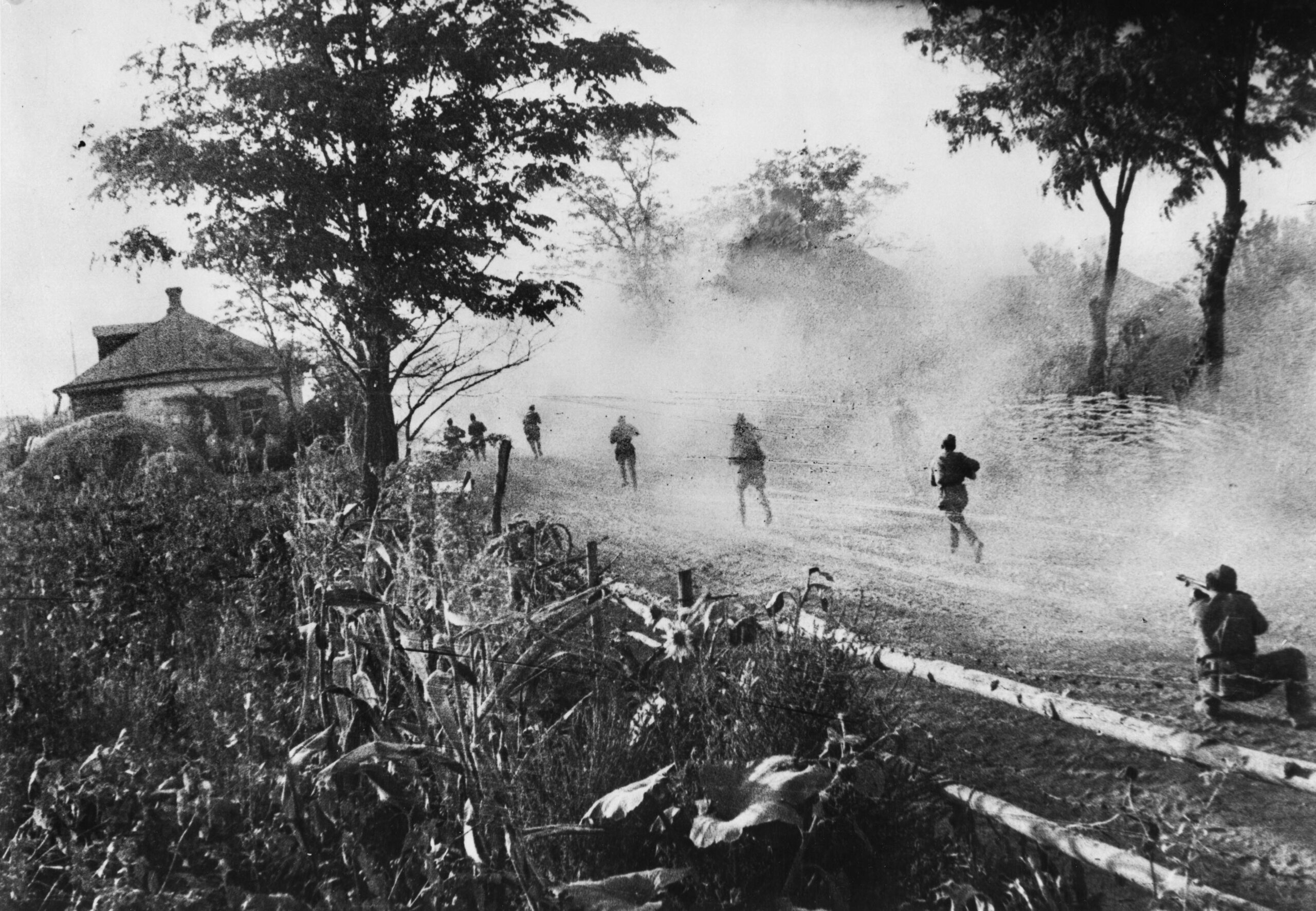
During the night of December 5, the German units rolled slowly toward their jump-off points. Balck planned to attack Cherniakhovskii’s right flank, defended by the 30th and 15th Rifle Corps. The 1st Panzer would hit the Soviets just north of Zhytomyr with the LAH on its right. Scheurpflug’s 68th Infantry would also advance on the extreme right flank of the corps. While Balck attacked, the XIII Army Corps and XXIV Panzer Corps would pin down the Soviet forces defending the Radomyshl’ sector.
Von Manteuffel’s 7th Panzer was Balck’s ace in the hole. Its mission was to advance far to the left of the 1st Panzer into the rear of the 60th Army, causing a complete collapse of the enemy defenses. The terrain and lack of heavy bridges in the area deprived von Manteuffel of his Tiger detachment, which was attached to the LAH because it had an easier avenue of advance.
On the Soviet side, Vatutin was also busy during the time it took the Germans to assemble. STAVKA agreed to have the 74th and 107th Rifle Corps move forward and occupy defensive positions between Brusilov and Kiev. Leselidze’s 18th Army, with three rifle corps, was also ordered into defensive positions. Since the Brusilov front remained stagnant, Rybalko was ordered to withdraw two corps from his 3rd Guards Tank Army and send them to positions west of Kiev. In addition, Col. Gen. Mikhail Efimovich Katukov’s 1st Tank Army had advance units of the army entering the area.
“Your Message is Unbelievable”
At 6 am on December 6, the panzers rolled forward. The weather had turned colder, and a light frost made the ground a bit more passable as the tanks moved out. Soviet outposts were taken by surprise. As the panzers approached, the Germans intercepted several radio messages calling for help. Their pleas were met with skepticism and accusations of vastly overestimated enemy strength. One such reply bluntly stated, “Your message is unbelievable.”
The 7th Panzer made surprisingly good progress during the opening of the attack. Although the Soviets put up a spirited resistance in several areas, the defense was uncoordinated. Slicing through the Soviet line, von Manteuffel turned northwest for his end run behind the Russian line. He was helped by aircraft from the 8th Air Corps. Its commander, Maj. Gen. Hans Seidemann, established his headquarters close to the XLVIII Panzer Corps headquarters, and his air liaisons were with the spearhead of the attack, coordinating air strikes to help the advancing panzers.
The LAH also moved swiftly, capturing the village of Styrty after a sharp fight. It then moved on, taking Korchiva and Bezhiv before noon. During the afternoon, elements of the division set out east toward Mokrenshchyna and Chernyakhin. As darkness fell, the LAH was still moving toward those two objectives.
Krüger’s 1st Panzer became embroiled in street fighting in a small town about 30 kilometers northwest of Radomyshl’. It was not until late afternoon that the town was cleared. Meanwhile, Brig. Gen. Hans Piekenbrock’s 208th Infantry Division, which was attached to Balck’s corps, moved into the area southeast of Chernyakhin while Hauffe’s XIII Corps attacked Soviet positions south of Radomyshl’ at Slipcaytsi and Golovin.
The advance continued with more success the next day. Von Manteuffel caught the 60th Army’s headquarters flat footed, and several staff officers were lost as the headquarters scattered. His objectives were the Russian bridgeheads in the Malyn area, which intelligence thought were occupied by a few Soviet divisions. Actually, there were three full corps in the area. Along with the 1st Panzer and the LAH, the Germans were squeezing Cherniakhovskii’s forces into an ever shrinking area along the south bank of the Irscha River.
Balck had hoped to coordinate an attack on the Malyn bridgeheads by using at least three panzer divisions. Von Manteuffel found himself in a tough battle at Nyankiva, 12 kilometers southwest of Malyn, as he awaited the arrival of the LAH. At 2:30 pm, Combat Group Peiper of the LAH captured the rail line west of Torchyn, about 40 kilometers southwest of Malyn. He then continued on, wiping out pockets of resistance as he moved northeast, but he was eventually forced to call a halt due to lack of fuel, which would not arrive until morning.
Bridgeheads Over the Teterev and Irscha
The 1st Panzer continued to drive northwest, with its eyes on the Teterev River. Hooking around Radomyshl’, the 1st took the village of Horbuliv and then headed toward Ditynets and Mircha with a combat group commanded by Lt. Col. Ernst-Joachim Bradel. Bradel found Ditynets defended by determined Soviet forces, and after heavy fighting he reported 21 Russian tanks, three artillery pieces, and 20 antitank guns destroyed.
On December 8, Bradel set out for the village of Fedorivka, which was also heavily defended. The village was taken only after savage house-to-house fighting. After refueling, Bradel continued his march. His advance ended on December 11 when the 1st reached the Teterev west of the village of Mala Racha, just north of Radomshyl’.
Since the opening of his counterattack, Balck had forced the Russians back toward Kiev in several sectors. Although the Radomshyl’ defenses still held, the Soviets north of the city had retreated across the Teterev—a move that not only threatened the 60th Army but also the flank of the 38th Army. Farther north, the 7th Panzer and LAH were hammering away at the Soviet bridgeheads in the Malyn sector while the XIII Corps chipped away at the Radomshyl’ defenses from the south. In spite of the strong enemy resistance, the counterattack seemed to be going as planned.
While the Russians struggled to hold their own in the bulge west of Kiev, they continued to flow new units into the area. The 25th Tank and 4th Guards Tank Corps, each containing more than 200 tanks and self-propelled guns, were funneled into the Korosten and Malyn sectors. The 18th Army’s 11th Rifle Corps was also sent forward into a defensive line along the eastern bank of the Teterev River to bolster elements of the 15th and 23rd Rifle Corps that were retreating across the river. Forward elements of the 27th and 40th Armies also arrived in the Kiev area unnoticed.
In order to continue their counterattack, the Germans first had to eliminate the various Soviet bridgeheads along the Teterev and Irscha Rivers. Von Mellenthin reported one such bridgehead being destroyed by the LAH and 1st Panzer, resulting in the elimination of 3½ Russian divisions. At Malyn the 7th Panzer was also successful in destroying several bridgeheads after heavy fighting.
Trying to Close the Meleni Pocket
As German infantry divisions moved into positions on the west bank of the Teterev, the panzer units there were pulled out of the line for a day’s rest before turning north to help von Manteuffel out on the Irscha line. German forces had recaptured Korosten and were pushing the Soviets eastward. With the Russians focused on the attacking forces in front of them, Balck saw an opportunity for an enveloping attack that could inflict even more damage on the enemy.
He planned to use the 7th Panzer as his right hook and the 1st Panzer and LAH as his left. Von Manteuffel was ordered to cross the Irscha east of Malyn and form a bridgehead that would serve as a jump-off point for the maneuver. With the bridgehead secured, von Manteuffel waited for the other two divisions to arrive. Under cover of a heavy artillery bombardment, the three divisions began their attack on December 19. While von Manteuffel swung northwest behind the Soviet line, the LAH and 1st Panzer made a frontal assault on the Russian positions around the village of Meleni, about 30 kilometers to the west.
As the 7th Panzer turned west, the other two divisions fought their way through heavy Soviet defenses and continued moving north of the Irscha. This move cut off up to two Soviet divisions that were facing the Germans advancing from Korosten. The LAH and 1st Panzer then swung northeast, hoping to link up with von Manteuffel, which would create a pocket around Meleni that could be destroyed by the advancing German infantry.
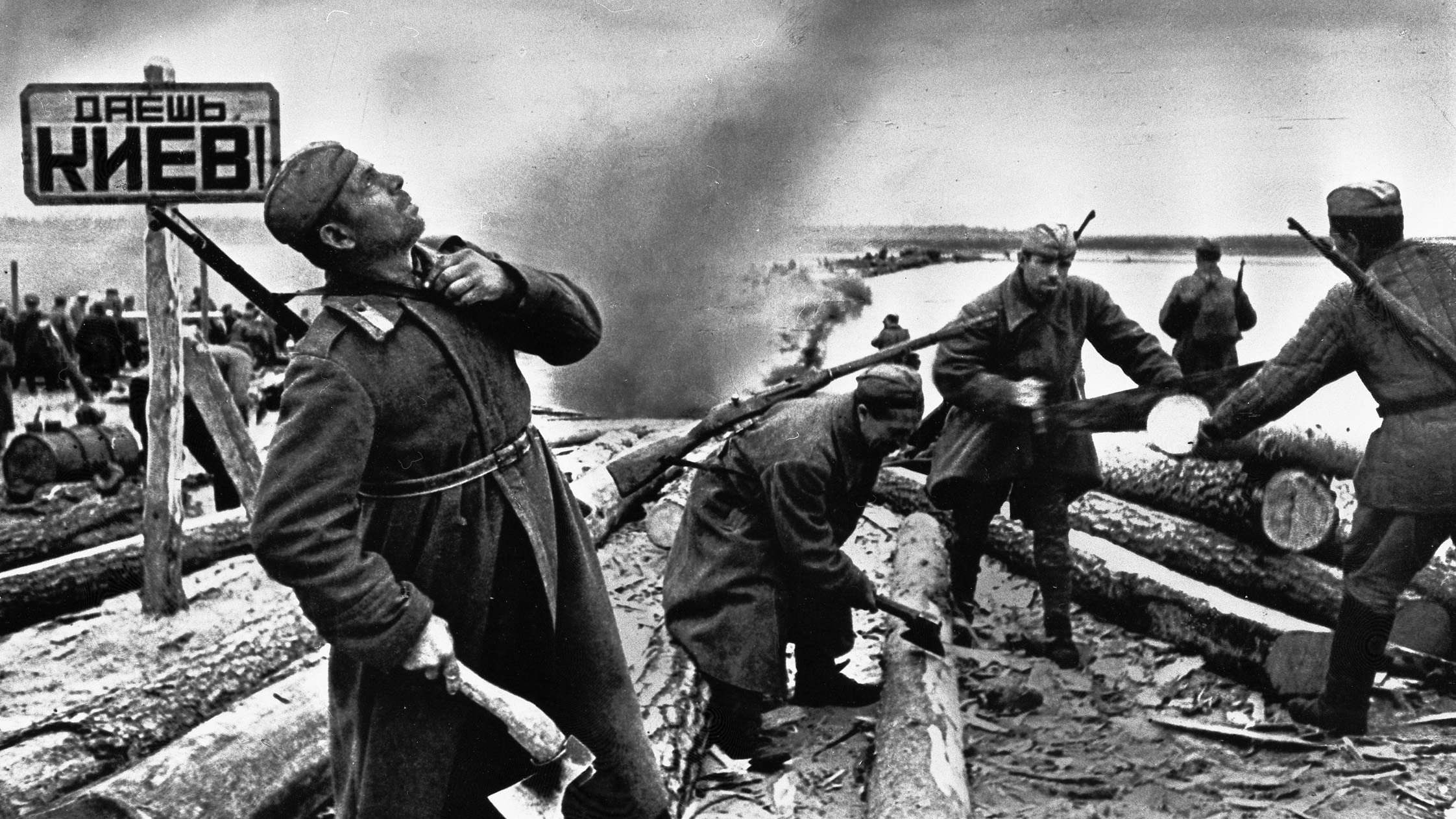
It seemed like a good plan, and on the 20th things seemed to be going on schedule for the Germans as the Russians were again caught off guard. The problem was that German intelligence had no idea what Balck was facing. It was known that the Soviets had concentrated forces around Meleni, but it was only after a map was found on a dead Russian major that the Germans realized the extent of those forces. The map showed they were going up against at least three tank corps and four infantry corps! On top of that, the Russians were also pouring more troops into the area.
A report from the LAH stated, “There is a constant reinforcement for the enemy from the east. The fact that we are being outflanked on both sides makes it impossible to hold on to our decision to make a forward thrust on both sides of the march line.”
The Germans continued to try to close the Meleni pocket up to December 23, when Balck issued orders to stabilize the line and suspend attacks in the area. During the afternoon and evening, the panzer divisions pulled back and established defensive positions.
Kiev’s Fate Decided
While German eyes were on the thrust toward Kiev, the Russians had also poured more reinforcements into the Brusilov sector. On December 24, three combined armies, two tank armies, and a number of independent corps burst out of their positions, hitting the three weakened panzer divisions (8th, 19th, and 25th) that were facing them. They crashed through the German positions, creating wide gaps in the line that could not be closed.
With the beginning of the December 24 offensive, the German attempt to retake Kiev was finally at an end. The Soviets had firmly established themselves on the west bank of the Dnepr, something that Hitler had wanted to avoid at all costs. Fighting would continue to clear all German forces from the lower Dnepr, but the costly fighting around Kiev had so depleted the units of Army Group South, the outcome was inevitable. It would be several more months before the entire Ukraine would be liberated, but its capital would never again be under German control.
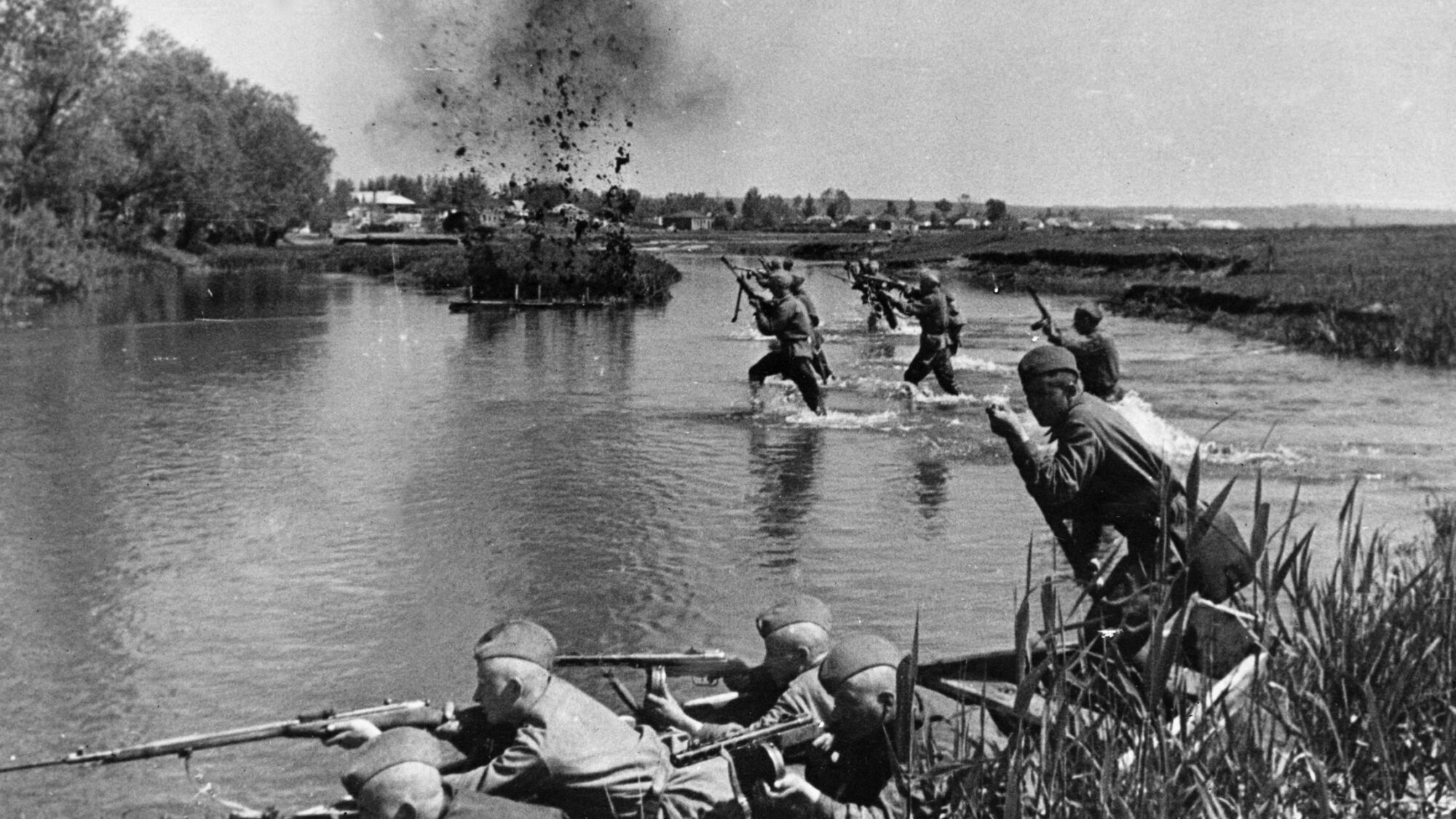

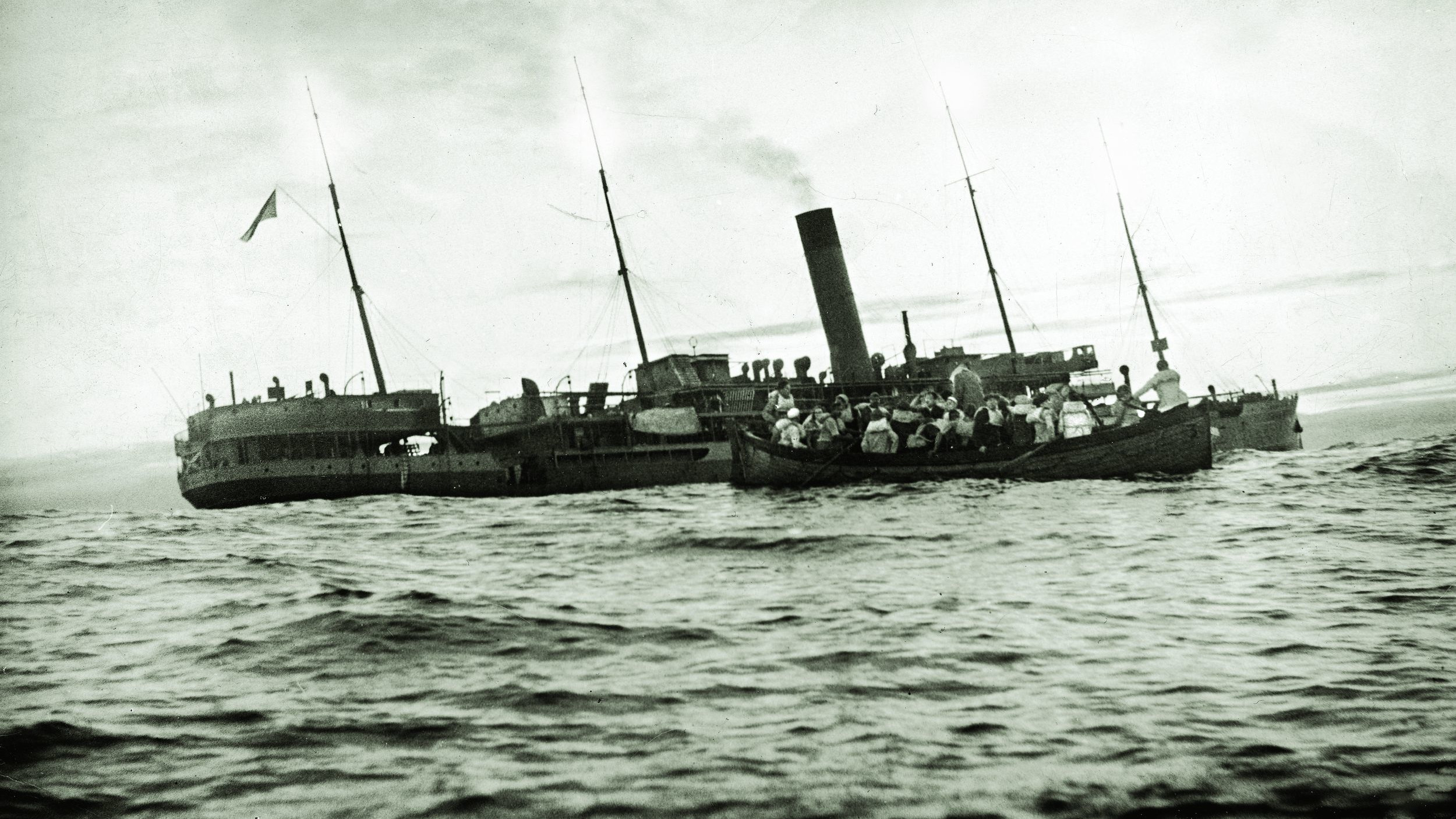
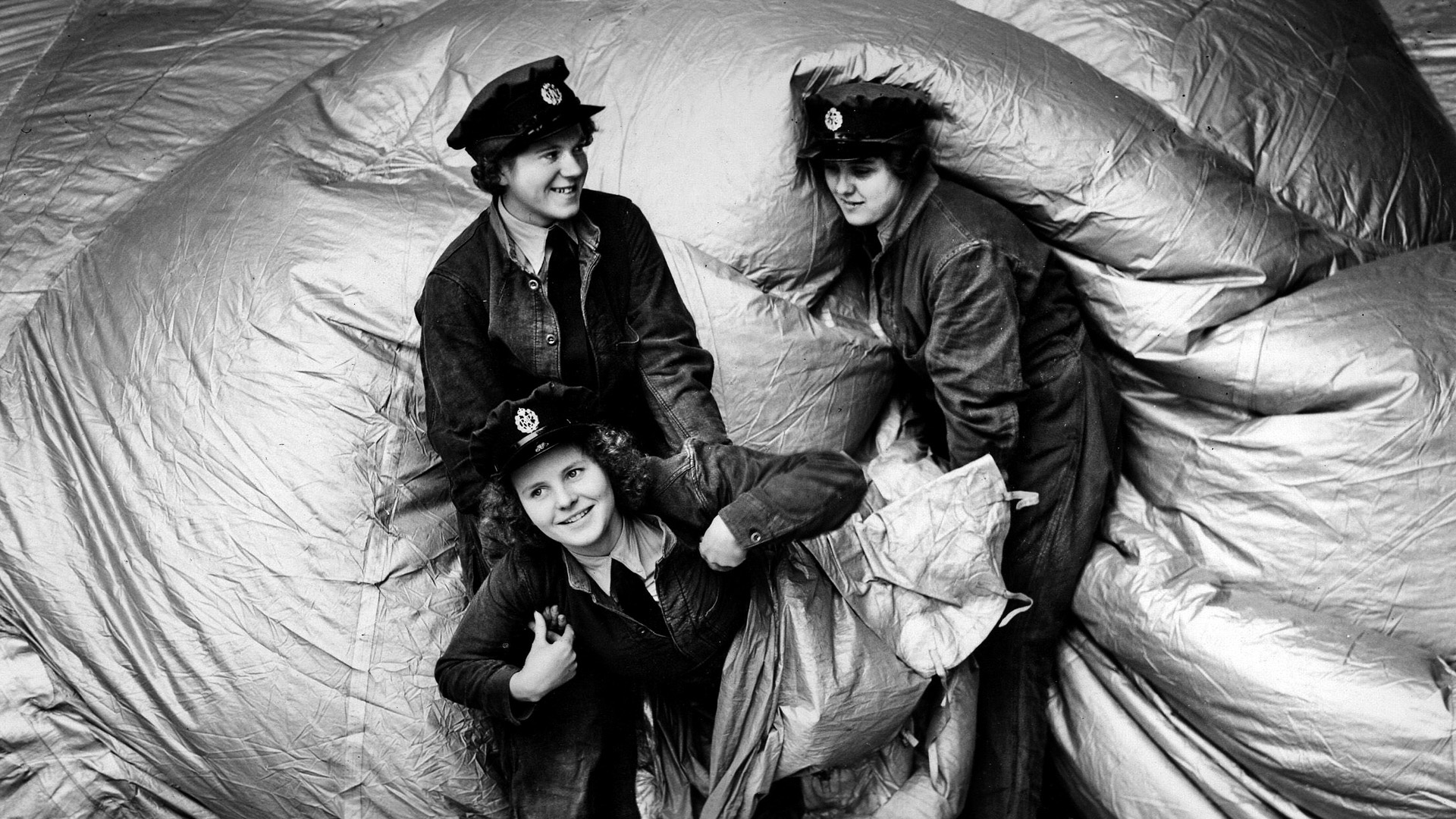
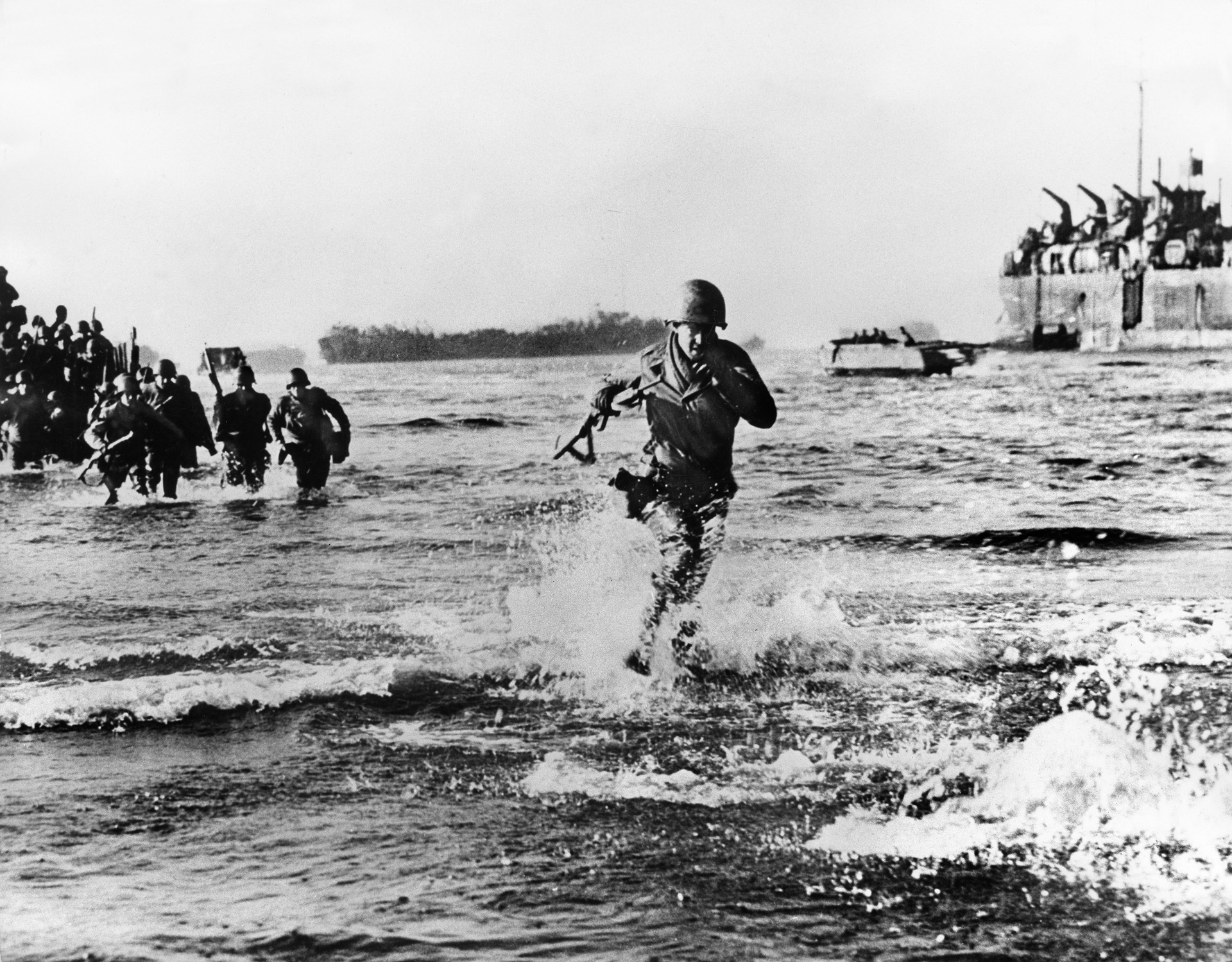
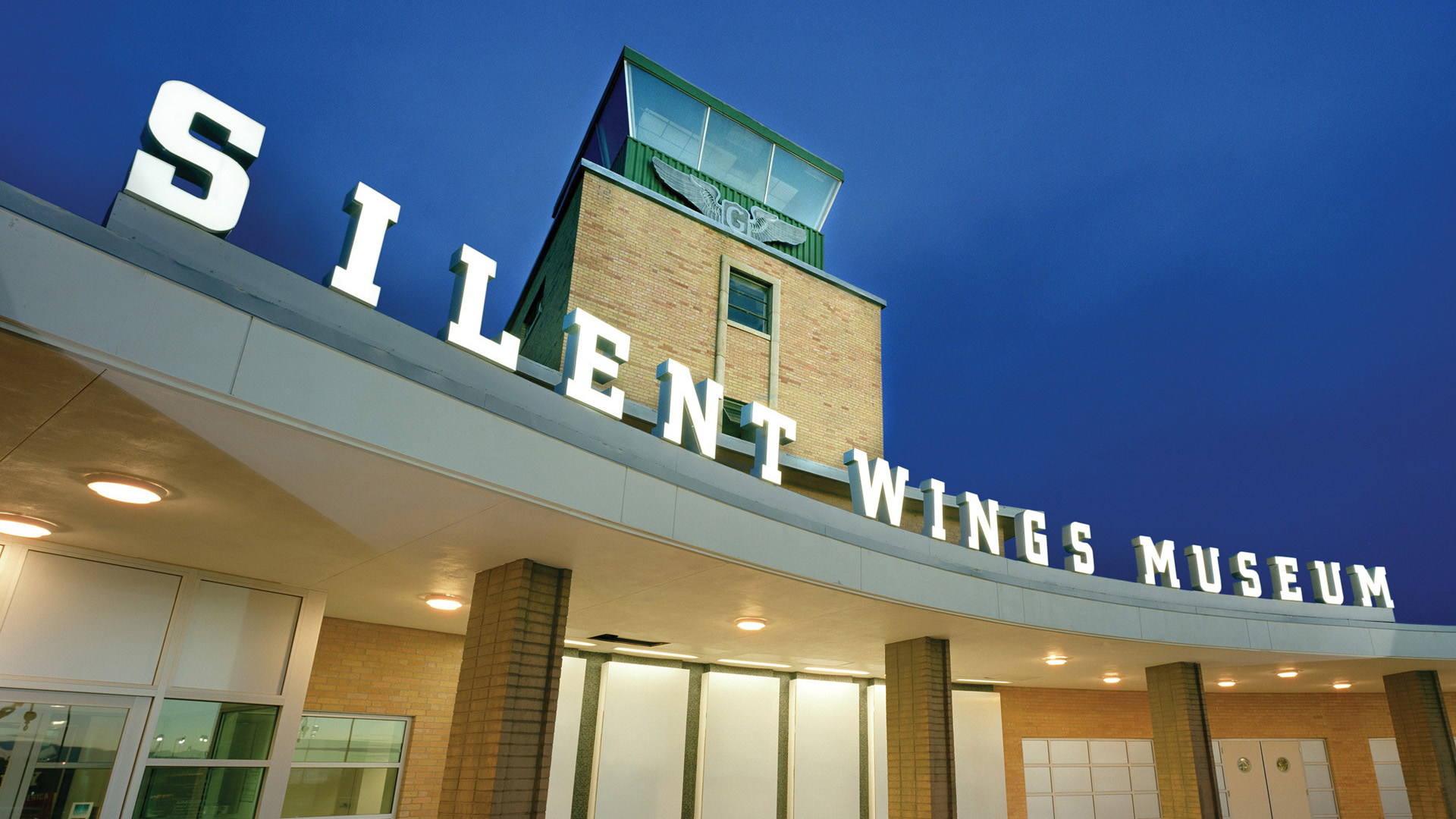

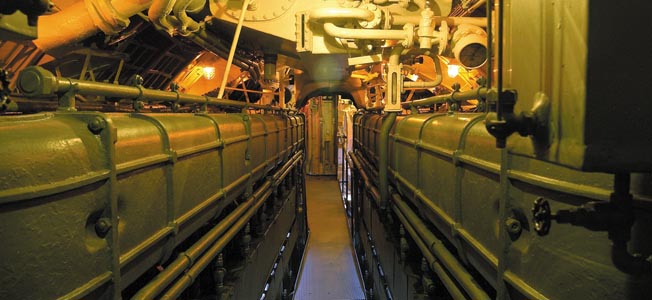
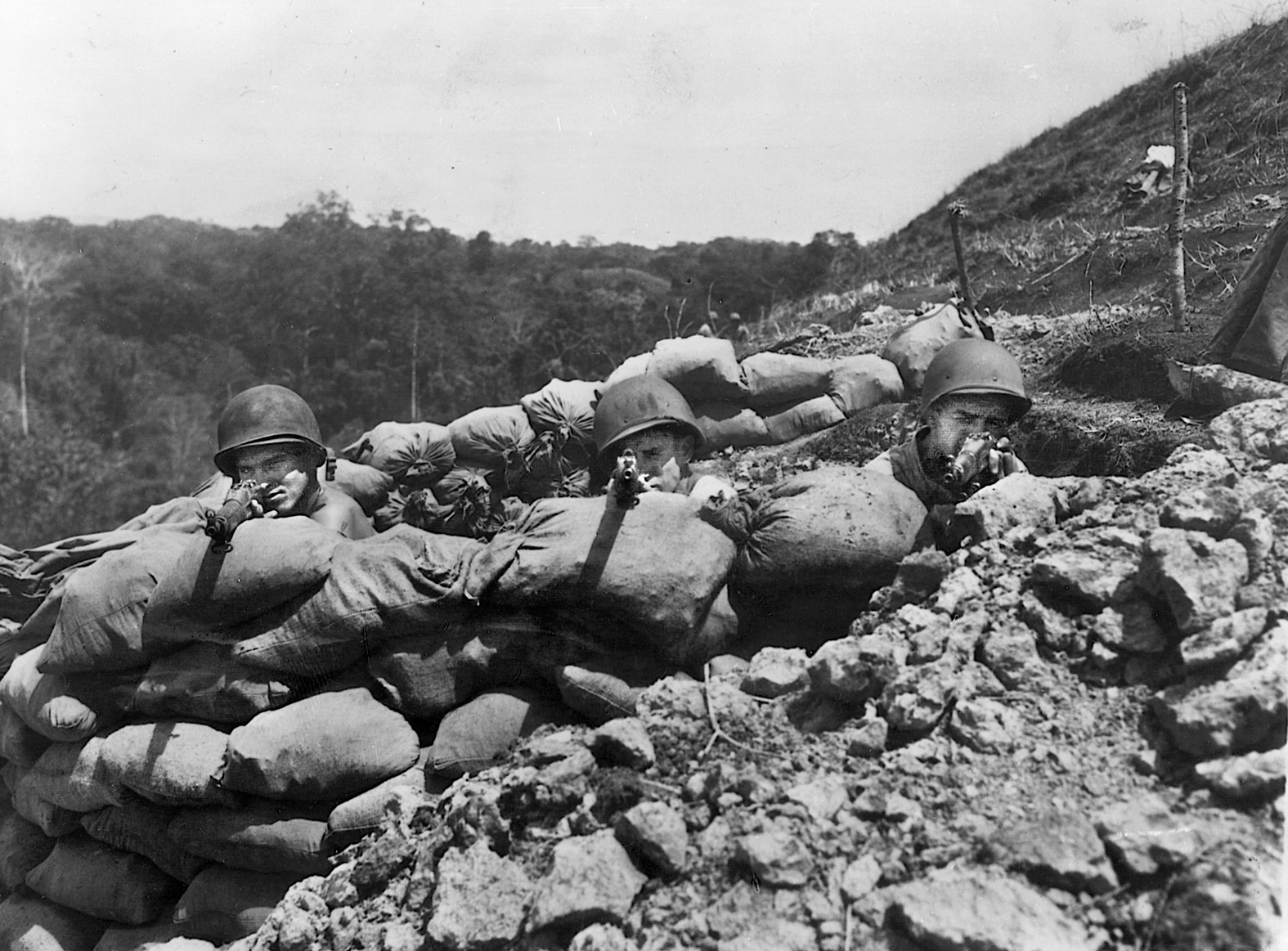
Join The Conversation
Comments
View All Comments